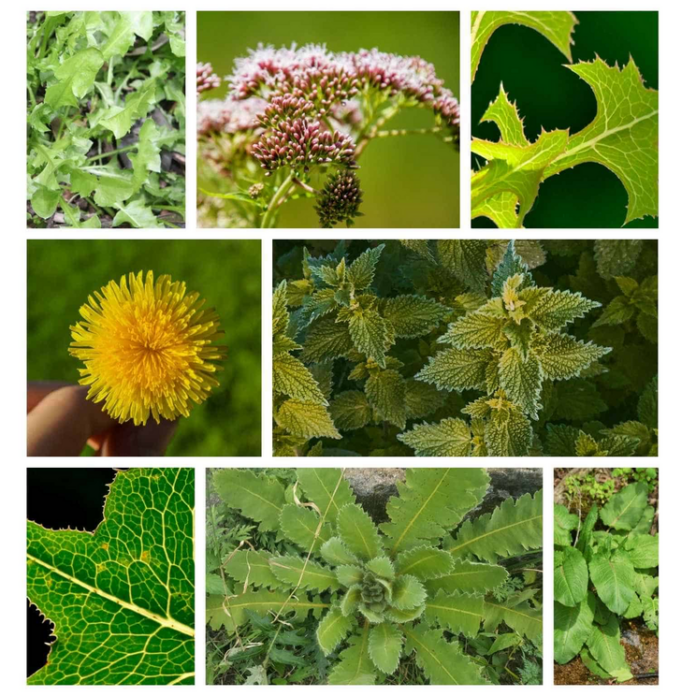Six wild lettuce lookalikes to watch out for
Growing up on hiking trails, in campsites, and going to Scout meets every two or three weeks gave me a healthy respect for some of the dangers posed by Mother Nature.
Wild lettuce (Lactuca Virosa) is a plant that’s technically a weed. It’s a member of the dandelion family and has been used in traditional medicine for centuries.
With that said, it is sort of dangerous, and you must know how to use it safely or you’re going to worsen your health problems. This plant goes by a variety of names, including:
- Bitter lettuce
- Opium lettuce
- Acrid lettuce
- Poison lettuce
When used correctly there are some medicinal uses for it, but there are many species and unfortunately, there are also plenty of lookalikes that may lead to a case of mistaken identity and lead to a rather unpleasant experience.
Identifying Wild Lettuce
There are a few identifying characteristics that will tell you whether you’ve found wild lettuce or not.
- Flowers: While flowers aren’t a part of every wild lettuce plant, the flowers that do form resemble dandelion flowers and are typically yellow, orange, or red.
- Roots: Wild lettuce typically has a brown or white taproot.
- Leaves: Almost always serrated and you can find hairs on the underside of the leaves and stems. They alternate and clasp at the stem. Breaking the stem results in a milky white sap/latex being leaked.
- Seeds: The seeds of wild lettuce plants are oval-shaped and flat.
Uses and Risks of Wild Lettuce
Wild lettuce has a few different chemicals in the sap/latex which have analgesic and sedative qualities; meaning it works to make you sleepy and is a pretty good pain killer – hence the name opium lettuce.
Now, there are also serious risks associated with using wild lettuce. For starters, it may react badly to any medication you’re already taking. While it’s not addictive, you can easily get too much in your system which can, in some cases, be fatal.
Like most herbs/edible plants, there are lookalikes which can be either edible or inedible and it’s important to know which is which.
1. Dandelion (Taraxacum Officinale)
Dandelions have a similar leaf shape to that of wild lettuce, but the leaves aren’t always serrated, and they don’t have hairs on their undersides.
They typically stay close to the ground as a rosette whereas a wild lettuce plant grows to be quite tall with a large stalk. Dandelion flowers are yellow in color and similar to those of wild lettuce.
2. Sow Thistle (Sonchus)
Sow thistle has a similar leaf shape and a long stalk which, when ruptured, leaks a milky white sap.
With that said, the defining feature – the hairs on the underside of the leaves – isn’t present here either. The flowers, while similar, bloom at different times.
It’s considered in many places to be invasive as it tends to grow very quickly over a wide area. With that said, it is edible and was used as rabbit fodder for years; giving it the nickname ‘hare lettuce’ – that’s cool if I say so myself.
3. Stinging Nettle (Urtica Dioica)
Also called the common nettle, stinging nettles have a similar leaf shape to wild lettuce and inexperienced foragers may mistake the two particularly since the stems and leaves are both covered in hairs – some of which come off when touched causing searing pain.
They can reach around 7ft. in height and are commonly found in Europe, Asia, and the western part of North Africa.
It’s got its own medicinal uses for things like urinary tract infections, diabetes, hay fever, and other things BUT there’s little scientific evidence to show that it works.
Lactuca Biennis
4. Blue Wild Lettuce (Lactuca Biennis)
Blue wild lettuce is found in much of the USA, Canada, and Alaska. It has large, lobed leaves which look similar to the leaves of Lactuca Virosa on a long stem and clusters of flowers that are blue-ish in color – hence the name ‘blue lettuce’.
5. Milkweed (Asclepias)
Okay, so milkweed is listed among lookalike plants but it doesn’t look anything like a wild lettuce plant. It has broad leaves with a long stem and leaks a milky sap/latex when the stem is broken – which is where it gets its name.
Now, while it looks nothing like a wild lettuce plant, I can see beginner foragers (people who are just starting out) mistaking it for wild lettuce.
Some species of milkweed contain cardiac poisons and are/were used by tribes in South America and Africa used them to poison arrows for hunting and fighting. If you’re judging by the leaves, they sort of resemble the leaves of a blue lettuce plant – without the large lobes.
6. Prickly Lettuce (Lactuca Serriola)
Also called milk thistle, this one has a somewhat fetid smell and bitter taste to it and has been used culinarily (including the roots as a coffee substitute) and medicinally since ancient times.
The ancient Greeks used it as a treatment for eye ulcers and the Navajo used it to induce vomiting…lovely.
Always Do Your Research!
Relying on a single source of information isn’t a very good idea – especially when it comes to edible/inedible plants. No two people will have the same reaction so it’s important to do as much research as you can BEFORE you eat anything weird.
Keep in mind that not all plants are edible, and eating the wrong one can lead to a very unpleasant experience.
I hope you all enjoyed the article and found it informative. As always, thanks for reading and I’ll see you for the next one!
Take care!

